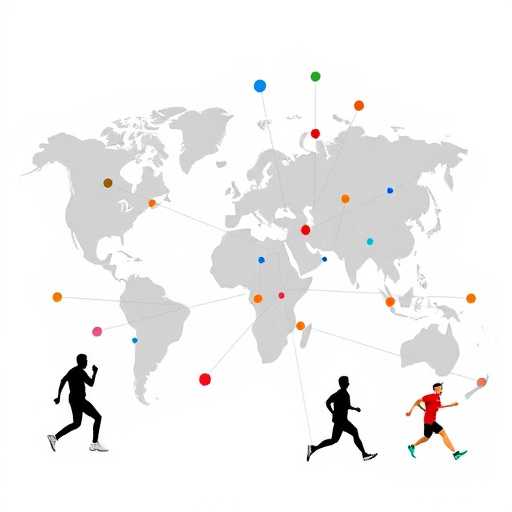Exploring the interconnected world of sports through the concept of 'scatter link,' highlighting its impact on athlete development, global integration, technology, and media influence.
The Rise and Evolution of Sports: Understanding the "Scatter Link" Theory
Sports have always played a significant role in human society, adapting and evolving over centuries. The concept of "scatter link" provides a unique lens through which we can understand the interconnected nature of sports, athlete development, fan engagement, and media proliferation.
The Historical Foundations of Sports
Sporting activities have been recorded as far back as ancient Egypt, Greece, and China. These early forms of sports were often tied to religious festivals or community gatherings. The Greeks held the Olympic Games, a tradition that has evolved into the modern Olympics we celebrate today. This historical context lays the groundwork for understanding how today's complex sports landscape has developed.
The "Scatter Link" and Its Significance
The term “scatter link” refers to the web of connections that exist within the world of sports. This concept helps in understanding how different sports disciplines, organizations, and stakeholder roles influence each other. As athletes and sports entities become more interconnected, a ripple effect can be observed that influences everything from grassroots level sports to international tournaments.
For instance, consider how training techniques developed for one sport can influence another. The use of technology in football has improved training routines, which in return has been adopted by rugby, tennis, and even golf. This cross-pollination of ideas is a pioneer of the scatter link theory.
Sports and Globalization
Globalization has played a pivotal role in reinforcing the scatter link between sports worldwide. Modern communication technology and travel advancements have allowed sports to transcend their local barriers. An American basketball player can become a national icon in China, while a Kenyan runner wins the hearts of the marathon enthusiasts in Europe.
This global expansion has also intensified competition and collaboration between countries, clubs, and individual athletes. The continuous exchange of ideas and cultures is central to the scatter link phenomenon, making sports a truly international experience.
Technological Impacts on Sports
Technology has also contributed significantly to the interconnectedness of sports. Equipment innovation, data analytics, and virtual platforms have changed how sports are played, watched, and governed. Athletes can track their performance metrics in real-time, allowing them to make informed adjustments.
Moreover, eSports reflect the perfect convergence of technology and sports, manifesting the scatter link theory. Here, geographical location holds minimal significance, and talent is judged purely based on skill and performance. This has expanded the reach and popularity of sports, creating new economies and professional avenues for aspiring athletes.
The Role of Media in Shaping Sports
The media has acted as a catalyst in propagating the scatter link effect within sports. Broadcasting deals, sports journalism, and online streaming have ensured that sports events reach a global audience. The World Cup, Super Bowl, and the Olympics, among others, are now globally anticipated events that unite audiences across time zones.
Media narratives can also shape public perception and influence sports trends. The way stories are presented can add layers of intrigue to sports rivalries or boost the profiles of athletes, enhancing their market value.
Impact of Fan Engagement
Fan engagement has grown into a pivotal aspect of the sports economy. The connection between fans and their favorite sports can be powerful enough to influence decision-making at various levels. Merchandise sales, stadium attendance, and social media interactions all contribute to the scatter link between sports and society.
Digital platforms have amplified this interaction, enabling fans to connect with athletes and teams in real time. Fantasy leagues, live streams, and social media platforms allow fans to participate actively, making them integral to the sports ecosystem.
Conclusion: The Future of Sports
The scatter link theory offers a dynamic perspective on the future of sports. Understanding these connections helps in predicting how sports may evolve. As organizations strive to reach new audiences, engage fans, and nurture the next generation of athletes, the scatter link will likely become even more pronounced.
While challenges such as equity, accessibility, and sustainability persist, sports continue to hold the power to inspire, unite, and entertain. Through an understanding of scatter link dynamics, stakeholders can work towards a future where sports are inclusive, diverse, and globally resonant.




